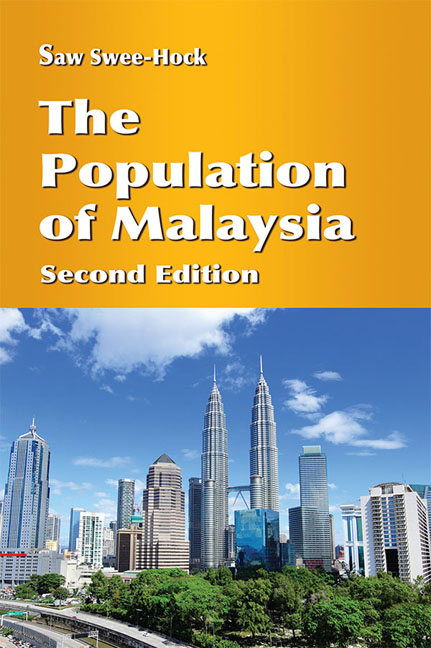Book contents
- Frontmatter
- Contents
- List of Tables
- List of Figures
- Foreword
- Preface
- 1 Introduction
- 2 External Migration
- 3 Internal Migration
- 4 Ethnic and Religious Patterns
- 5 Population Growth and Distribution
- 6 Population Structure
- 7 Nuptiality Trends and Patterns
- 8 Fertility Trends and Differentials
- 9 Mortality Trends and Differentials
- 10 Labour Force
- 11 Future Population Trends
- Bibliography
- Index
- Frontmatter
- Contents
- List of Tables
- List of Figures
- Foreword
- Preface
- 1 Introduction
- 2 External Migration
- 3 Internal Migration
- 4 Ethnic and Religious Patterns
- 5 Population Growth and Distribution
- 6 Population Structure
- 7 Nuptiality Trends and Patterns
- 8 Fertility Trends and Differentials
- 9 Mortality Trends and Differentials
- 10 Labour Force
- 11 Future Population Trends
- Bibliography
- Index
Summary
INTRODUCTION
Malaysia has been one of the most important areas of migration ever since the establishment of British colonial rule in Penang in 1786 and in other parts of the country in the nineteenth century. The large and sustained immigration was mainly due to the demand for labour in the public works and primary production sectors, the excellent prospects for trade and commerce, and the law and order attendant on British rule. Such forces of attraction coupled with liberal immigration policies, were reinforced by equally strong repelling forces in the immigrants’ countries of origin. Natural calamities, political upheavals, population pressure, and lack of economic opportunities induced the immigrants to leave their countries for Malaysia at a time when the supply of labour from the indigenous Malays was neither adequate nor forthcoming.
In the early days, the immigrants would usually leave their families behind in their own countries and came to Malaysia not as permanent settlers but as “bird-of-passage”. With their earnings, quite a number were able to send regular remittances to their families, made occasional visits home, and eventually returned to their countries after acquiring some wealth or on retirement. In the course of time, however, an increasing proportion of immigrants brought their families along, sent for their families or married local residents and remained in the country permanently. But their numbers did not alter the generally transient character of the population, which persisted until the outbreak of war in Malaysia in December 1941. The Japanese Occupation, the increasing supply of local labour in the postwar period, and the strict immigration control from the 1950s have put an end to large-scale immigration. At the same time, an increasingly significant proportion of the prewar immigrants have come to regard Malaysia as their permanent home.
During the prewar period there were essentially three main streams of migration into Malaysia: the northern stream from China, the western stream from India, and the relatively less important stream from the then Dutch East Indies (now Indonesia) in the south.
- Type
- Chapter
- Information
- The Population of Malaysia , pp. 15 - 42Publisher: ISEAS–Yusof Ishak InstitutePrint publication year: 2015



